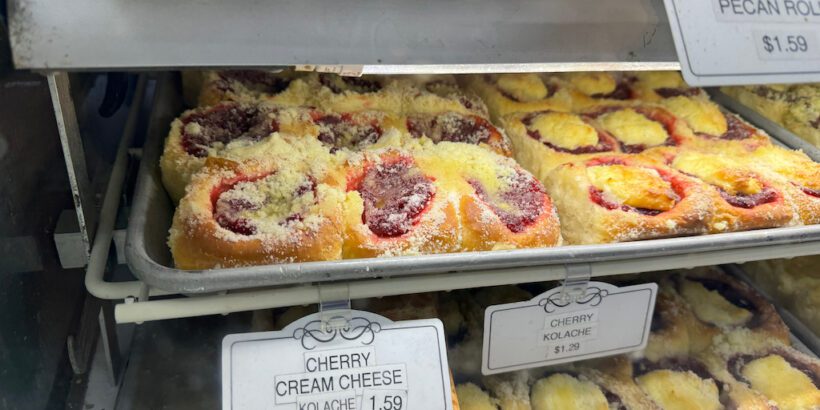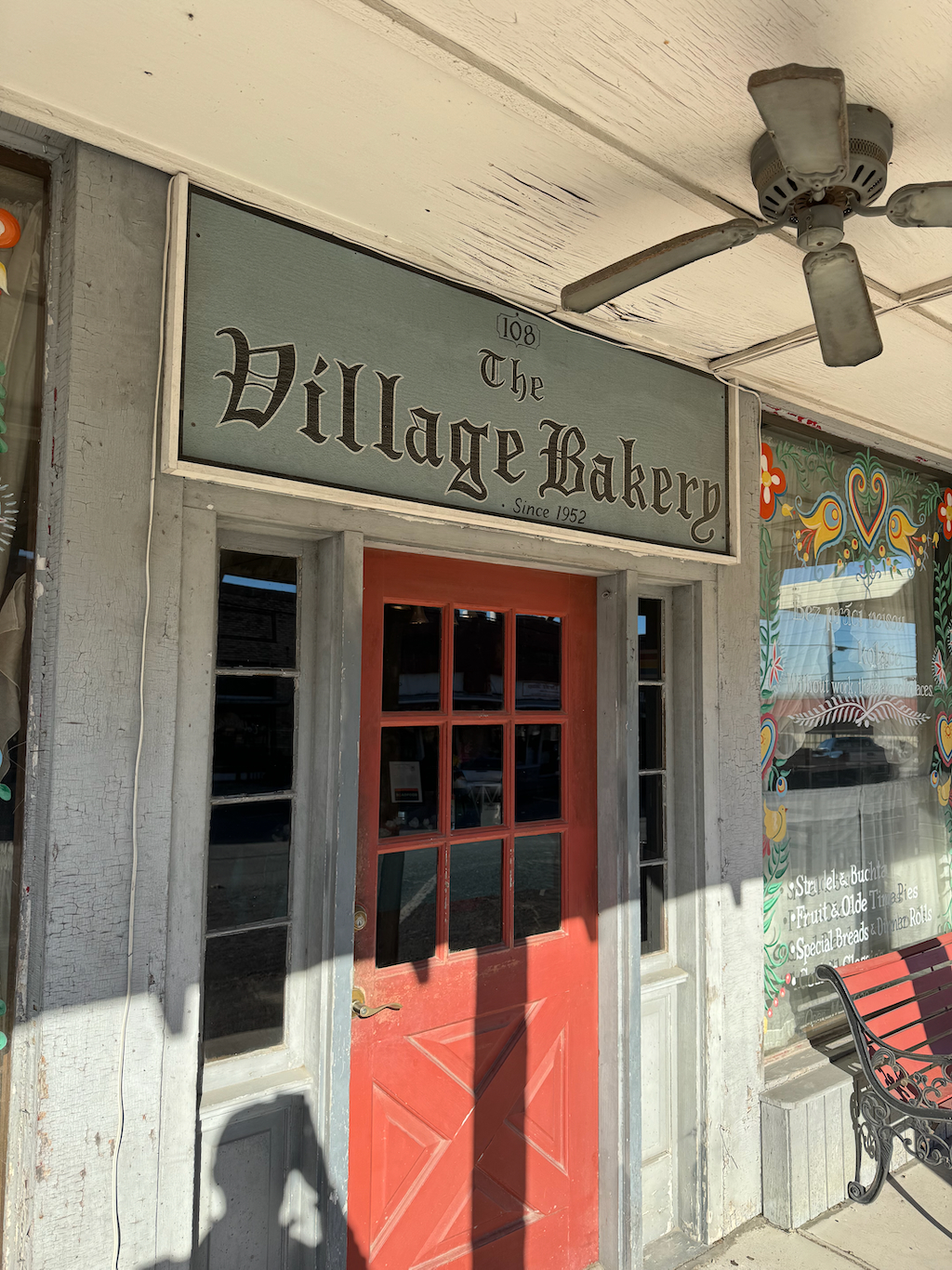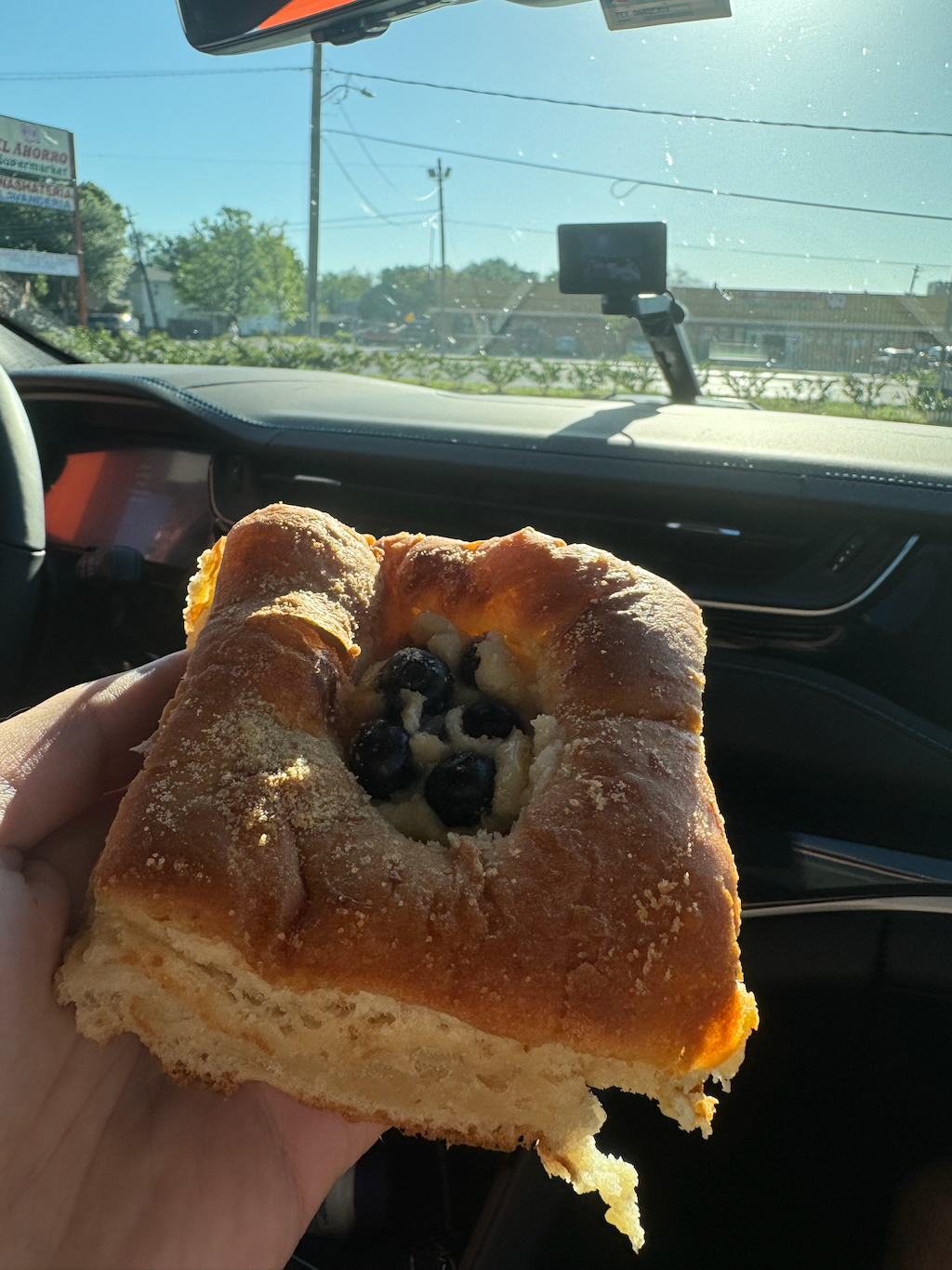Our culinary landscape has often been enriched by the contributions of immigrants, gifting us with some of the most beloved foods.
Whether savoring the flavors of Cudighi, indulging in a pasty, relishing a coney dog, or diving into the unique taste of Cincinnati chili, immigrants have consistently elevated our dining experiences.
Among these delectable offerings, the kolache stands out as a must-try when exploring Texas.
Whether savoring the sweetness of open-faced pastries or relishing the savory delight of sausage wrapped in a fluffy dough, the kolache experience is nothing short of amazing.
And because there are so many variations it’s basically impossible to not love this dish.
In this blog, we embark on a journey to explore the origins, flavors, and cultural significance of these delightful treats that have become an integral part of the Texan culinary landscape.
Table of Contents
What is a kolache?
A kolache (pronounced ko-LAH-chee) is a sweet and doughy pastry that is filled with various ingredients such as fruit or cream cheese. It originated in Central Europe, but it has become particularly popular in Texas due to Czech immigrant communities.
In Texas, savory versions with ingredients like sausage and cheese are also common, although they sometimes go by a different name (more on that below).
Kolaches are frequently enjoyed during breakfast, as a convenient road trip snack, and, honestly, for me, even with lunch or dinner.
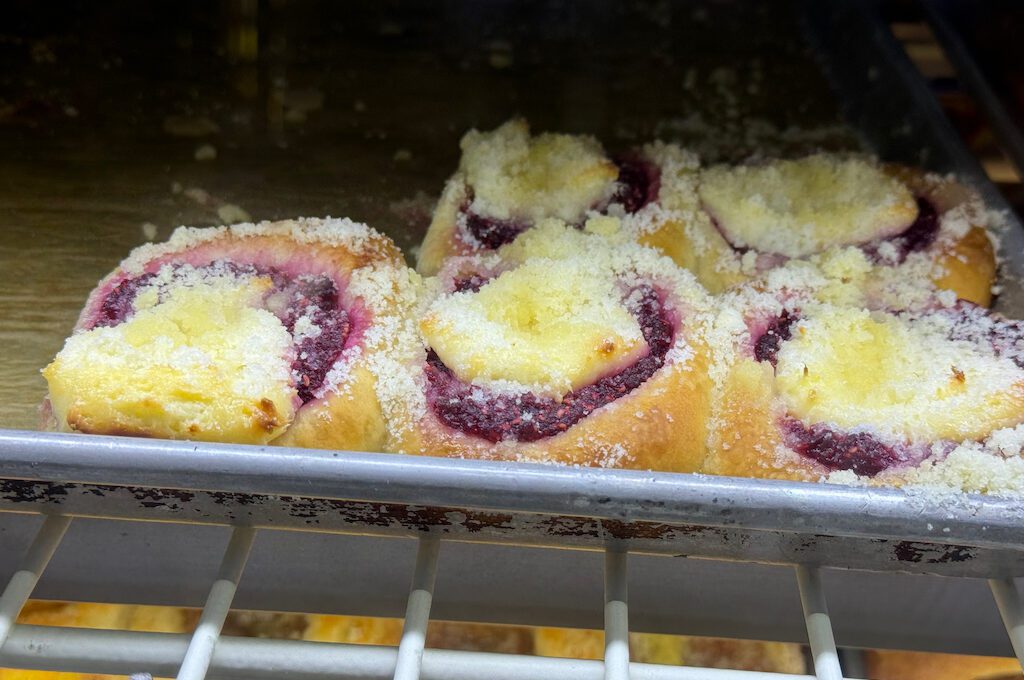
History of the Texas kolache
The roots of kolaches in Texas can be traced back to the 1800s when Czech immigrants began arriving in the state, spurred by the aftermath of the 1848 revolutions.
The influx of Czechs into Texas dates back to the early 1820s, but it was in the 1850s that substantial migration gained momentum.
The allure of available land was a significant factor that attracted Czech immigrants to Texas. The initial group undertook the journey in 1851 and subsequent waves of immigrants followed.
By the early 1910s, more than 15,000 foreign-born Czechs resided in the state. And today, with nearly 200,000 Czech Americans in Texas, the state boasts the largest Czech population in the United States.
Galveston served as the primary arrival point for these immigrants back in the 1800s and from there they dispersed into various central Texas counties, largely in the Blackland Prairie.
Their attention to language and the establishment of self-sufficient farms was crucial to their culture, and they also preserved their heritage through music and food.
One of these foods was the kolache, which would have come onto the Texas scene in the mid 1800s.
The original versions of these tasty pastries consisted of poppy seed, apricot, and a soft and sweetened farmer’s cheese. But they would eventually evolve into a world of flavors.
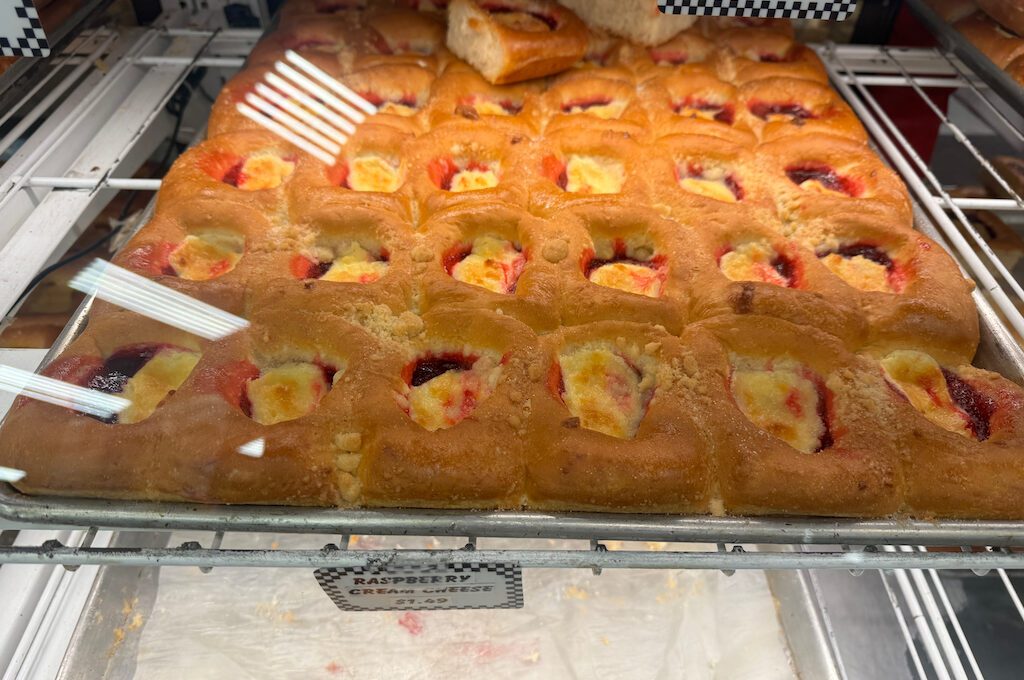
The sweet treat’s popularity eventually led to it being sold at church markets and then people started seeing the opportunity.
Taking an innovative leap, Wendel Montgomery established the inaugural Texas kolache bakery, named The Village Bakery (regrettably, now closed). While it might seem evident today, there were initial uncertainties about the market for this traditional treat typically crafted in home kitchens.
Montgomery opened his kolache bakery in 1952 and introduced a savory version of the kolache after being “inspired by a hot dog.”
He called it the klobasnik, which means “sausage” in Czech and is pronounced kloh-bahs-neek.
Unlike kolaches, the first klobasniks were filled with jalapeno sausage and cheese, or simply sausage.
Today, the klobasnik landscape has expanded to include a delightful medley of ingredients such as ham, eggs, brisket, boudin, crawfish etouffee, and a plethora of other delectable options.
Czech-Texans still call a savory meat-filled “kolache” a “klobasnik.” But klobasniks are often called kolaches by Texans, local donut shops, and even Buc-ees. So to your average Texan, a kolache could be sweet or savory.
To help with clarity, menus often specify something like “sausage kolache.” But you don’t typically see “klobasnik,” unless you’re in an area that has a strong Czech culture like West, Texas.)
Things get a bit funky in other parts of the country like Louisiana where you might stumble upon the intriguing term “crawfish kalotchies.”
Not to mention, the singular and plural forms of these words have their own spelling variations. But I won’t inundate you with an excessive dose of kolache lingo; I’ll stick to the most basic iterations of the words “kolache” and “klobasnik” that I can get away with.
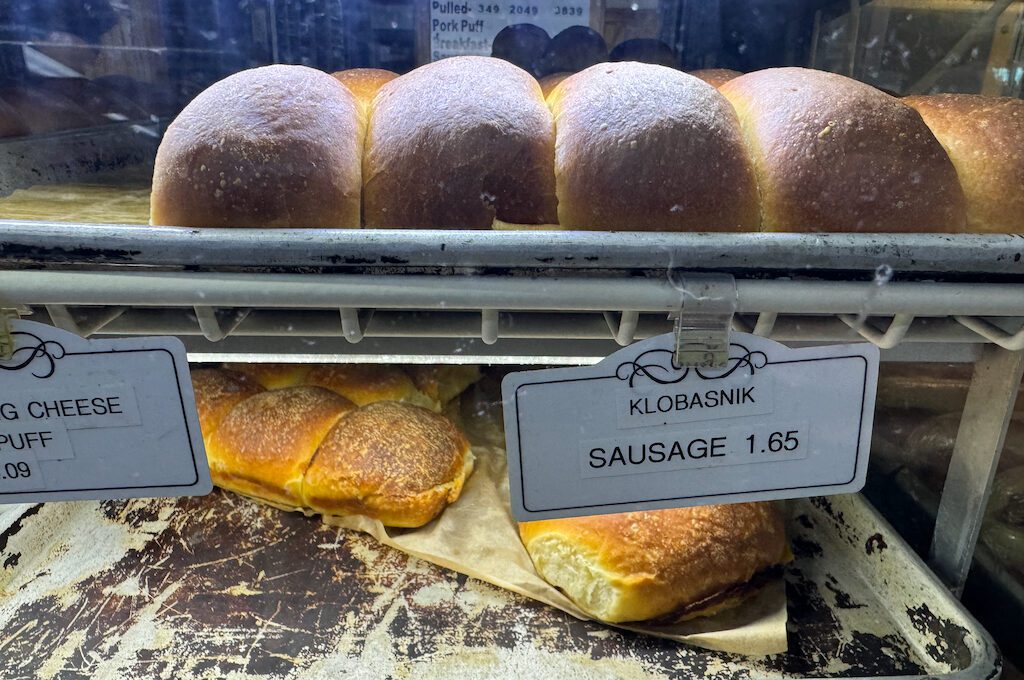
Where can you find Kolaches in Texas?
Kolaches can be found throughout the great state of Texas.
All of the major cities like Houston, Dallas, and San Antonio will have options for you to choose from but you’ll often find them in droves in small Texas towns with Czech ancestry.
One of the most popular places is the city of West, Texas. Some people refer to this town as “West Comma Texas” to distinguish it from the region of West Texas.
There are several spots within this small gem of a city that are famous for their kolaches, such as Slovacek’s West, Czech Stop, and Gerik’s Ole Czech Bakery & Deli. All amazing.
Near the I-10 Corridor, you have Weikel’s Bakery in La Grange, TX, and Hruska’s in Ellinger. Both destinations offer authentic and delicious kolaches worth trying.
My favorite kolaches I’ve ever had so far were from The Original Kolache Shoppe in Houston. I went with the blueberry and cream cheese and it was heavenly. No fruit pie filling — just the berries dropped into a hot filling of cream cheese. While the filling doesn’t look like a large portion it’s just buried in that doughy goodness.
The sausage, egg, cheese, and jalapeño didn’t disappoint either. Don’t sleep on the Original Kolache Shoppe!
For the truly ambitious there is of course the famous “Texas Kolache Trail” publicized by Houston’s ABC 13. Here are some of the locations:
- The Kolache Shop – Clute
- Two Czech Chicks – Danbury
- Old Main Street Bakery – Rosenberg
- Vincek’s Smokehouse – East Bernard
- B-Jo’s Czech Bakery at Prasek’s Hillje Smokehouse – Hillje
- Hruskas – Ellinger
- Chappell Hill Bakery – Chappell Hill
- The Original Kountry Bakery – Schulenburg
- Weikel’s – La Grange
- Village Bakery – West (closed)
- Czech Stop – West
- Mornings Kolaches (Houston area)
- B-Jo’s Czech Bakery at Prasek’s Hillje Smokehouse – El Campo
- The Kolache Factory (various spots)
- Old Main Street Bakery (Fort Bend County)
- The Original Kolache Shoppe (Houston)
And if it’s a festival you’re after you can find kolache festivals in places like Hallettsville.
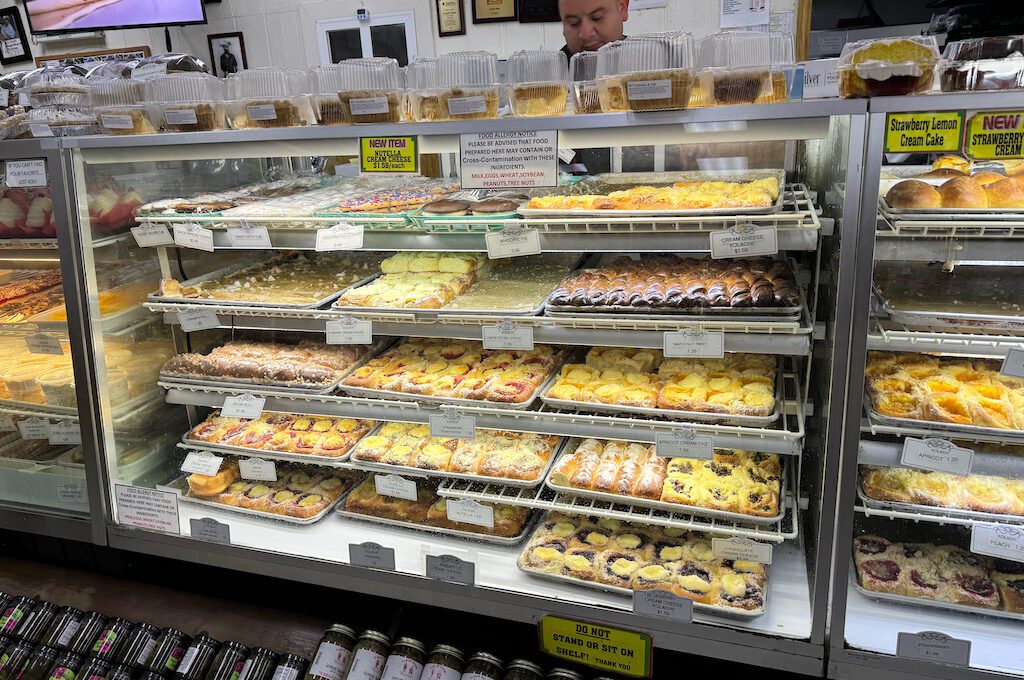
What are the best types of kolaches?
The best kolaches for you will depend on your taste buds and how close to traditional you want to remain.
For sweet options, popular choices include fruit-filled kolaches with flavors like strawberry, blueberry, and cherry and if you want to go very traditional look at poppy seed, prune, and apricot. Personally, if I’m going with fruit filled I have to go with a cream cheese + fruit combination. Yum.
You may find some more modern twists like chocolate or Nutella. While very tempting as a chocolate lover, I recommend sticking with the fruits. They just seem to work much better.
Some may also feature a sugar crumble topping known as “posypka” or a delightful sprinkle of sugar crystals on top, adding a sweet crunch.
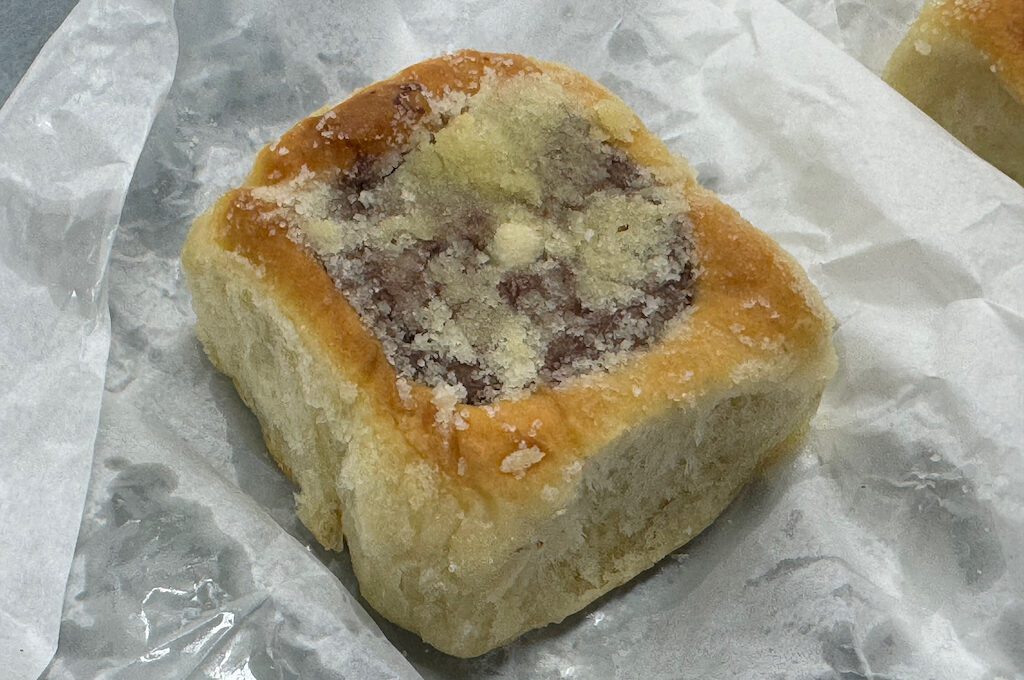
On the savory side, options like sausage and cheese kolaches are widely enjoyed. But you also have sausage and cheese + jalepeno, ham and cheese, brisket, boudin — lots of possibilities.
As kolaches have branched out from the origins lots of local places now put their own spin on them. In San Antonio Emily Stone, a pastry chef and owner of Bexar Kolaches serves up kolaches with carne guisada and the chorizo and egg. Venutre outside the Lone Star State and you’ll only encounter more variety, as you can find kolache shops in everywhere from the Northeast to the Pacific Coast.
But here’s the pro tip: warm up your kolache to enhance the softness of the dough and intensify the flavors. Often a shop will offer you the option to have it warmed and I recommend taking them up on that offer.
Final word
Indulging in kolaches is an essential Texan experience. Fortunately, these delectable pastries are widely available across various regions of the state, offering a plethora of flavor combinations.
The diversity in options ensures that savoring this regional delicacy becomes an enjoyable and accessible experience for all, contributing to the richness of Texas culinary delights.
Daniel Gillaspia is the Founder of UponArriving.com and the credit card app, WalletFlo. He is a former attorney turned travel expert covering destinations along with TSA, airline, and hotel policies. Since 2014, his content has been featured in publications such as National Geographic, Smithsonian Magazine, and CNBC. Read my bio.

